The current state of the air defense system of Azerbaijan
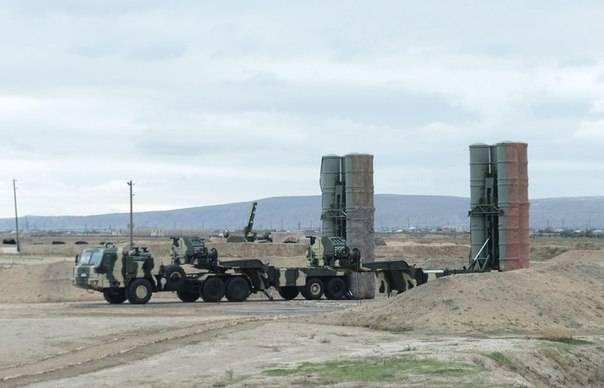
Almost a month ago, a controversial article was published on a Military Review. The current state of the air defense system of Armenia. In their comments to it, some “hot guys” living in Azerbaijan especially distinguished themselves. Obviously, this is due to the fact that Armenia and Azerbaijan, which were once parts of the USSR, still have an unresolved territorial dispute, which regularly develops into armed clashes on the opposition line in Nagorno-Karabakh. This circumstance not only poisons relations between the two Transcaucasian republics, but also forces Baku and Yerevan to spend substantial funds on military preparations. Since the military budget of Armenia is many times less than the funds allocated by Azerbaijan for defense, the Armenian leadership has relied on a military alliance with Russia. Azerbaijan, in turn, is steadily increasing the power of its own armed forces, purchasing modern equipment and weapons abroad, and is developing a national defense industry.
Currently, Armenia and Azerbaijan are not able to achieve victory in armed conflict with each other. In the event of an attack on Armenia, the Russian military contingent deployed in the republic will oppose the aggressor. And there is no doubt that in the event of an escalation of the conflict, Russian troops will be promptly strengthened by transferring personnel, equipment and weapons from the territory of Russia. At the same time, it is absolutely clear that our military, stationed at the bases of Gyumri and Erebuni, carry out a purely defensive mission and will not take part in aggressive actions against any state that has a common border with Armenia. At the same time, although the Armenian Air Force has a small number of Su-25 attack aircraft and L-39 combat trainers, and there are no capable supersonic fighters and front-line bombers at all, in recent years one can observe a planned increase in the combat capabilities of the air defense system of Azerbaijan. And this is not only about strengthening the anti-aircraft cover of the army units, which can be threatened by attack aircraft and combat helicopters. Abroad, the anti-aircraft complexes and systems of medium and long range, which also have a certain anti-missile potential, are actively purchased and deployed around administrative and industrial centers.
From the very beginning, Azerbaijan and Armenia found themselves in unequal conditions. During Soviet times, much attention was paid to the anti-aircraft cover of the Baku oil fields. Back in 1942, the Baku Air Defense District was formed. Until 1980, this operational connection of the air defense forces of the USSR defended the sky over the North Caucasus, Transcaucasia and the Stavropol Territory. In 1980, during the reformation of the Soviet Air Defense Forces, the Baku Air Defense District was disbanded, and air defense units were reassigned to the command of the Transcaucasian Military District and the 34 Air Force. This decision caused serious damage to the country's defense, as the army command did not understand many of the nuances associated with the organization of airspace control, and the radio engineering and anti-aircraft missile forces became excessively dependent on the Air Force command. Subsequently, this decision was recognized as erroneous, as the control of air defense across the country was largely decentralized. It was at this time that cases of violation of the USSR air border by Turkey and Iran became more frequent, which was not always possible to respond in a timely manner. To correct the situation and restore a single centralized control over the region’s airspace, in 1986, the 19-I separate Red Banner Air Defense Army was established with headquarters in Tbilisi. The 19-th OKA air defense responsibility zone included: Georgia, Azerbaijan, part of Turkmenistan, Astrakhan, Volgograd and Rostov regions and Stavropol Krai. In October 1992, the 19-I OKA air defense was disbanded, and part of the equipment and weapons transferred to the "independent republics".
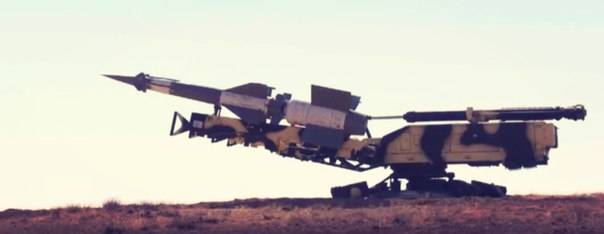
Azerbaijan inherited the property of the 97 division of the air defense. At the time of the collapse of the USSR, two radio engineering brigades in the Ayaty and Mingechaur regions were stationed in the republic, the 190-th anti-aircraft missile regiment was headquartered in the city of Mingechaur, the 128-I and 129-I anti-aircraft brigade with headquarters in the villages of Zira and Sangachaly. These units were armed with long-range S-200ВМ - 4 division, medium-range complexes С-75М2 / М3 - 6 divisions, low-altitude С-125М / М1 - 11 divisions.
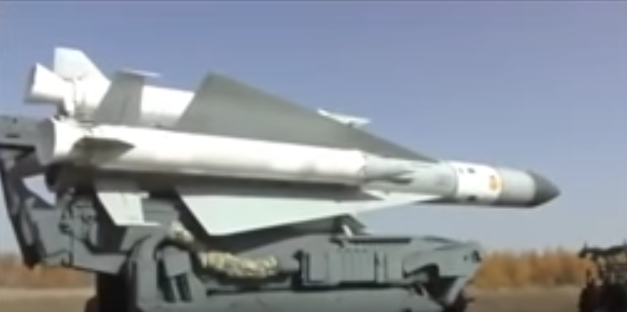
5В28 SAM of long-range Azerbaijani air defense system С-200ВМ on the 5П72 launcher
Four dozen MiG-25PD / MPD interceptors of the 82 th fighter regiment were based at Sumgait airfield "Pumping". Also, several MiG-21CM and MiG-21bis entered the Azerbaijani Air Force.
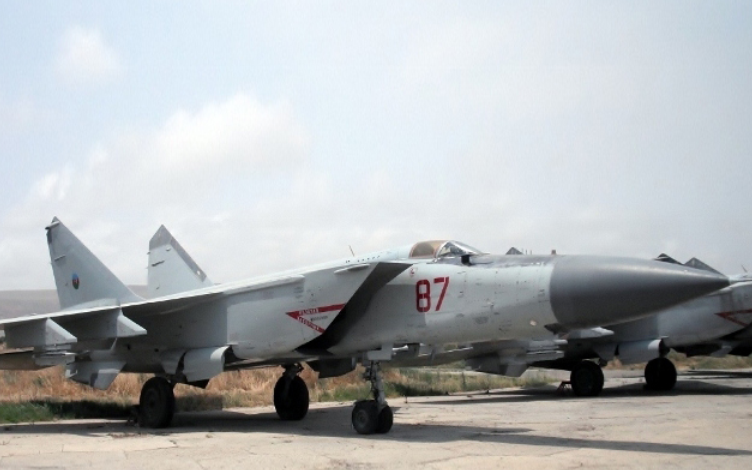
The MiG-25 interceptors flew up to the 2011 year, after which they were put “in storage”, where they stayed until the 2015 year. It was assumed that these machines will be overhauled and upgraded, for which the Azerbaijani side was negotiating with foreign contractors.
However, after weighing all the pros and cons, they refused to modernize interceptors built more than 30 years ago, preferring to purchase modern aircraft. At present, the fate of the Azerbaijani MiG-25 is unknown, at the former home-based airfield of Pumping they are no longer there.
Since MiG-25PD / PDS interceptors were outdated and their operation was too expensive, 2007 MiG-12 and 29 MiG-2UB were purchased in Ukraine in 29. In the 2009-2011 years, Ukraine additionally supplied another 2 combat training MiG-29UB. Before being sent to Azerbaijan, the aircraft were partially modernized and underwent a refurbishment at the Lviv State Aircraft Repair Plant. Modernization of avionics was to install new communications and navigation equipment. The planned modernization of the radar with an increase of about 25% detection range of air targets did not take place. Create your own radar for the fighter in Ukraine could not.
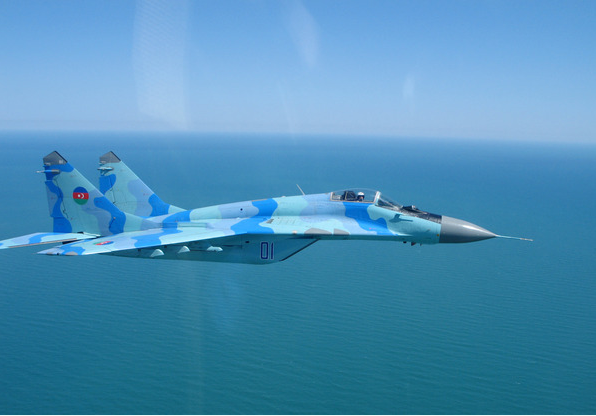
As part of the Azerbaijani-Ukrainian contract, spare engines RD-33, a set of spare parts and guided missiles P-27 and P-73 were supplied with the fighters.
Satellite image of Google Earth: MiG-29 fighters of the Azerbaijani Air Force at the Pumping Air Base
According to The Military Balance 2017, in the Azerbaijani Air Force, as of 2017, there were 13 MiG-29. It is not known how many of them are in flight condition, but Azerbaijani MiGs are not flying very actively. All airplanes from the 408 Fighter Squadron are based at the Pumping Air Base near Sumgayit.
Turkish F-16 and Azerbaijani MiG-29 during the Azerbaijani-Turkish exercises Turaz Şahini 2016
In a short time, the life cycle of the MiG-29 fighters built in the USSR will end and the Azerbaijani Air Force is looking for a replacement. The most likely candidates are the F-16 Fighting Falcon of the Turkish assembly or used aircraft from the US Air Force, as well as the light Pak-Chinese fighter JF-17 Thunder. In addition, Azerbaijani representatives probed the ground regarding the possibility of acquiring light Swedish Saab JAS 39 Gripen and Russian Su-30MK multi-role fighters. Possible deliveries of JAS 39 Gripen are hampered by restrictions in Swedish law prohibiting the sale weapons to countries that have unresolved territorial disputes with their neighbors. In addition, the Swedish fighter uses the engine, avionics and armament of American production, which means you need US permission. The Russian Su-30MK fighter has much greater capabilities than the JF-17 and Saab JAS 39, but after the delivery of these planes, Azerbaijan will get a serious superiority over Armenia, which is a strategic ally of Russia, which may exacerbate the situation in the region.
In the first years of independence, the higher military-political leadership of the republic did not understand the role that air defense forces play in the republic’s defense capability and therefore this segment of the armed forces gradually degraded. However, the Azerbaijani military managed to maintain a significant part of the equipment and weapons in working condition. Unlike Georgia, which also received Soviet-made air defense systems С-125, С-75 and С-200, in Azerbaijan due to the attraction of foreign specialists, training of calculations abroad and conclusion of contracts for repair and modernization with specialized enterprises in Ukraine and Belarus It turned out to maintain the combat readiness of its air defense system at a fairly high level. At present, there are one anti-aircraft missile forces that are organizationally part of the Azerbaijani Air Force: one anti-aircraft missile regiment, four anti-aircraft missile brigades and two separate radio engineering battalions.
Satellite image of Google Earth: C-75М3 air defense system position in the vicinity of Kerdeksani, northeast of Baku
Of particular respect is the fact that, until recently, the C-75M3 and C-200BM air defense missile systems with anti-aircraft missiles were on combat duty in the anti-aircraft missile forces of Azerbaijan. Which require time-consuming maintenance, regular refueling and draining of liquid toxic fuel and caustic explosive oxidizer with the use of respiratory protection equipment and skin. Before 2012, the positions of the four C-75М3 targets were located mainly around the city of Mingechaur, in the Yevlakh district. The last C-75М3 division in the vicinity of the settlement of Kerdeksani, northeast of Baku, was removed from combat duty in the middle of 2016.
At the beginning of the 21 century, the Azerbaijani C-200BM complexes underwent a "minor modernization" and refurbishment. It was reported that stocks of heavy anti-aircraft missiles 5B28 were replenished as a result of purchases in Ukraine.
The positions of the C-200ВМ long-range complexes (two divisions each) were in the Yevlakh region, not far from the settlement of Aran and on the coast of the Caspian Sea east of Baku. The range of destruction of the Azerbaijani S-200BM air defense systems allowed not only to control the airspace over the entire republic, but also to shoot down targets flying at medium altitudes over the territories of other states and a large part of the Caspian Sea.
Zones of defeat and positions of Azerbaijani air defense missile systems as of 2011 year. Red circles are C-75 affected areas, turquoise - C-125, dull green - Circle, purple - C-200
In 2016, according to satellite images, two anti-aircraft divisions of the long-range air defense system C-35ВМ were on combat duty at positions in 200 km east of Baku on the coast of the Caspian Sea. The pictures also show that the missiles are not on all "guns". The missiles are loaded with 2-3 launchers of six available in the system. Apparently, the Azerbaijani "Vega" in the near future will be removed from service. The C-200 SAM even taking into account the range and altitude of air targets unsurpassed in our country is too time consuming and expensive to operate. And the maintenance of outdated equipment with a high proportion of electrovacuum elements requires heroic efforts from calculations. However, it is possible that the C-200BM air defense missile systems will continue to play a “ceremonial” role after they are removed from the air defense system - they look very impressive at military parades.
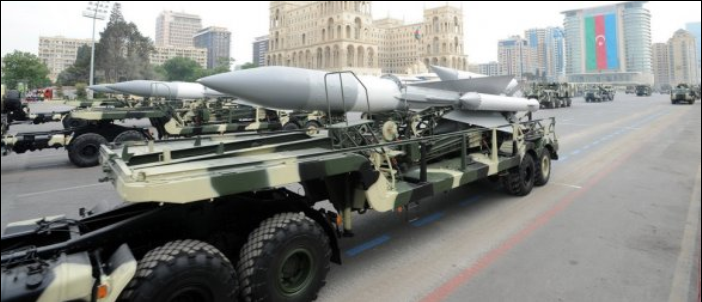
Unlike complexes with liquid rockets, Soviet-built air defense systems С-125М / М1 with solid-propellant missiles will also serve. This very successful low-altitude air defense missile system has a large modernization potential, and therefore its updated versions have been developed in Poland, Ukraine, Russia and Belarus.
Satellite image of Google Earth: C-125 air defense system position in the vicinity of Shushikend
According to data published by the Stockholm World Research Institute (SIPRI), in 2014 Azerbaijan received 9 divisions (27 PU) S-125 C-125-TM Pechora-2T, ordered in Belarus in 2011 year.
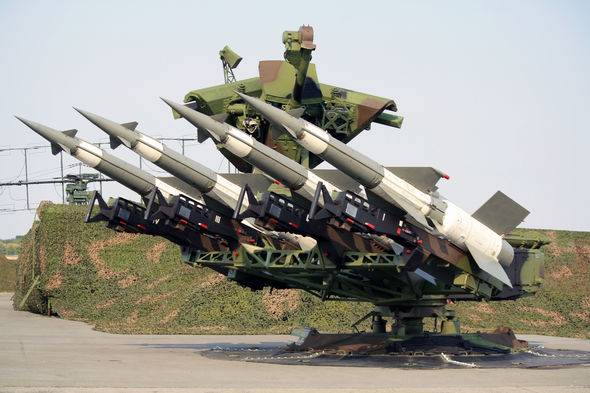
Low-altitude C-125М / М1 have been upgraded by the Belarusian NGO Tetrahedron to the level C-125-TM Pechora-2Т. At the same time, in addition to extending the service life of the complex, the immunity to interference and the possibility of dealing with targets barely visible in the radar range were increased. It is assumed that after upgrading the C-125-TM "Pechora-2T" will be able to operate for another 10-15 years.
Satellite image of Google Earth: air defense missile systems and radar positions at the ZRV training center in Kurdamir
Personnel training for the anti-aircraft missile units of the Armed Forces of Azerbaijan is carried out in the 115-th training center for anti-aircraft missile forces near the Kurdamir airbase. Here, specially prepared positions have anti-aircraft missiles C-125, Krug and Buk-MB, as well as the P-18, P-19, 5Н84А radars and modern 36Д6М.
Beginning with the 2008 year, Azerbaijan began to receive serious funds from the export of "big oil". Taking into account the fact that the armament and equipment of the air defense forces produced in the USSR needed to be modernized and replaced, the leadership of the country allocated considerable financial resources for these purposes. According to the Russian Center for Analysis of the World Trade in Arms (TSAMTO), in 2007, Azerbaijan signed a contract worth $ 300 million for the purchase of two C-300PMU-2 “Favorit” C-200 divisions in Russia, eight towed launchers in each zone and 48 SUR 6H2EX2010. Deliveries of vehicles began in the summer of 2012, and ended in 300. There is information that the ZRS data were originally intended for Iran. However, after our leadership succumbed to pressure from the United States and Israel, the contract with Iran was canceled. However, in order not to let down the manufacturer of the C-XNUMXP systems - the Almaz-Antey Air Defense Concern, it was decided to sell the already built air defense systems in Azerbaijan.
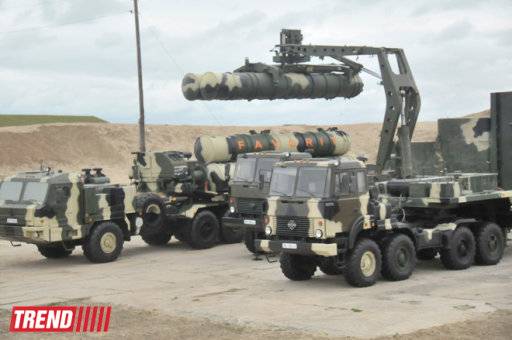
Calculations of long-range anti-aircraft missile systems delivered to Azerbaijan have been trained and trained in Russia. C-300PMU2 "Favorite" is an export modification of the Russian ZRS C-300PM2. It uses a towed launcher with four transport and launch containers.
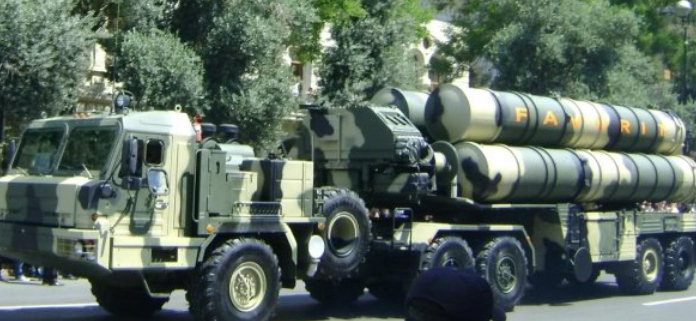
For the first time, Azerbaijani C-300PMU2 were publicly demonstrated during the June 26 parade in Baku. Then, three 2011P5TE85 launchers, two 2Т5 transport vehicles and one 58Н30Х6 radar passed through the front parade.
Satellite image of Google Earth: the initial position of the ZRS-300PMU2 ZRS in 50 km north-west of Baku
In 2012, both divisions were deployed on the coast in 50 km north-west of Baku, at the place where the C-75 and C-125 air defense systems were located in the past. However, the divisions later divided, for one in 2014 they began to prepare a position on the top of a hill in the western suburb of Baku, near the village of Kobu. Continued combat duty began here in 2015 year. Another position is located in 10 km east of the Azerbaijani capital, near the town of Surakhani.
In addition to the defense of the capital from air attack weapons and strikes of operational tactical missiles, the long-range anti-aircraft missile system covers the main Azerbaijani air base, Nasosnaya, and the reserve Sitalchay, a large ammunition depot in Gilyazi and the new naval base of the Karadag district of Baku.
Satellite image of Google Earth: C-300PMU2 ZRS position east of Baku near the town of Surakhani
Attention is drawn to the fact that the Azerbaijani ZRS-300PMU2 are on combat duty in a reduced form. At each position indicated, instead of the eight statewide towed launchers, four were deployed.
The Russian C-300PMU2 is not the only modern long-range anti-aircraft systems available in Azerbaijan. It is reported that in December 2016, the Azerbaijani armed forces conducted missile firing from the Israeli long-range air defense system Barak 8. Apparently, Azerbaijan has become the first buyer of the land version of the Israeli air defense system. The complex was developed by Israel Aerospace Industries (IAI) in partnership with Elta Systems, Rafael and other companies.
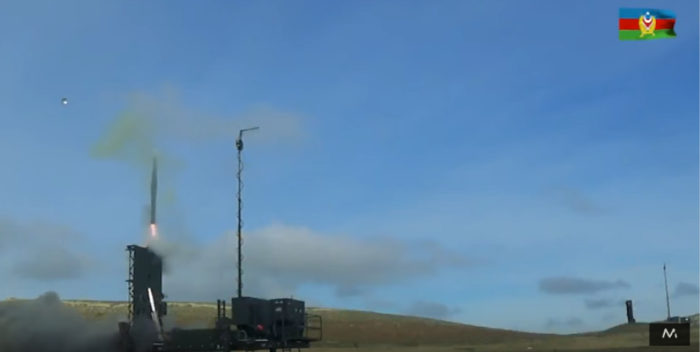
Azerbaijan has ordered a towed version of the ZRK and 75 anti-aircraft missiles. SAM Barak 8 is able to fight with ballistic and aerodynamic targets at a distance of 90 km. The cost of one battery is $ 25 million, the missile system has a cost of about $ 1,5 million per unit.
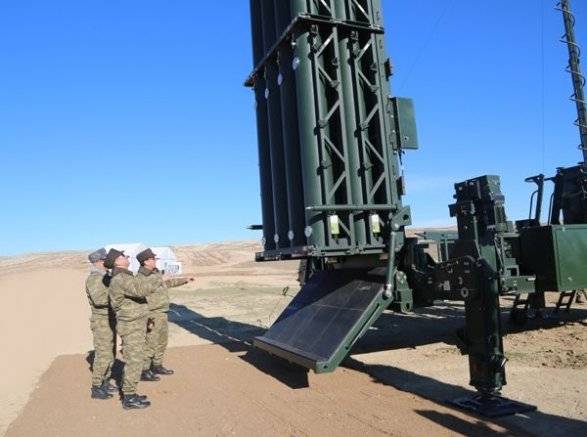
Solid two-stage missiles 4,5 long with m equipped with an active radar seeker. The rocket is launched from a vertical launcher. After launch, the rocket is displayed on the intercept trajectory and receives illumination from the guidance radar. When approaching the target at the distance of inclusion of an active HOS, the second engine starts. Flight guidance equipment provides information transfer to the rocket, and can re-target it after launch, which increases the flexibility of application and reduces the use of missiles. The ELM-2248 multi-purpose radar for detecting, tracking and guiding is also capable, in addition to controlling the Barak 8 air defense missile system, to coordinate the actions of other air defense units.
When dividing the Soviet military equipment, the armed forces of Azerbaijan got 9 batteries of the Krug-M and Krug-M1 army mid-range mobile anti-aircraft missile systems on a tracked chassis.
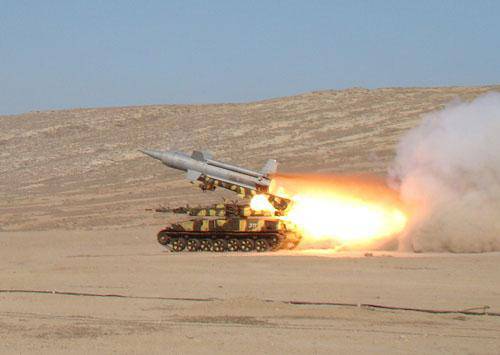
Until 2013, three anti-aircraft batteries were involved in the combat duty of the Agjabedinsky region of Azerbaijan: P-40 airborne target detection radar, 1С32 missile guidance station and three 2ПНNXX SPU. However, now outdated morally and physically, the Krug-МХNUMX air defense system has been replaced by Buk-MB medium-range complexes.
At the moment, the Krug air defense system of all modifications has been transferred to the storage bases and most likely will not be returned to service, will be disposed of. The main reason for this, in addition to the wear of the equipment of the 1C32 guidance station, where a significant part of the electronic units was built on electrovacuum devices, was the impossibility of further operating the 3X8 SAMs with a straight-through engine running on kerosene. Due to the cracking of soft rubber fuel tanks, the rocket leaked and became unsafe in the fire relation.
In addition to military medium-range air defense systems “Krug”, the army’s air defense of Azerbaijan inherited from the Soviet Army: around 150 “Strela-2М” and “Strela-3”, 12 combat vehicles of the mobile floating air defense system “Osa-AKM”, a half dozen Strela air defense systems -10SV "on the basis of tracked MT-LB, and around 50 ZSU-23-4" Shilka ". In addition, in the ground units there is a certain amount of 23-mm anti-aircraft gun ZU-23, including those installed on tracked MT-LB tractors. There are also 57-mm C-60 anti-aircraft guns and 100-KS-19 anti-aircraft guns in storage. The arrows of the first modifications are hopelessly outdated, and their batteries, apparently, have become unusable. In this regard, in 2013, Russia delivered 300 units of Igla-S MANPADS to Azerbaijan.
“The improvement of the air defense of the NE of Azerbaijan is carried out both by purchasing new equipment abroad and by upgrading existing samples. Thus, in 2007, a contract was signed with Belarus for the modernization of the Azerbaijani Osa-AKM air defense system to the Osa-1T level. Modernization works were carried out at the Belarusian Tetrahedr Scientific and Production Unitary Enterprise. Upgraded complexes transferred to the customer in 2009 year.
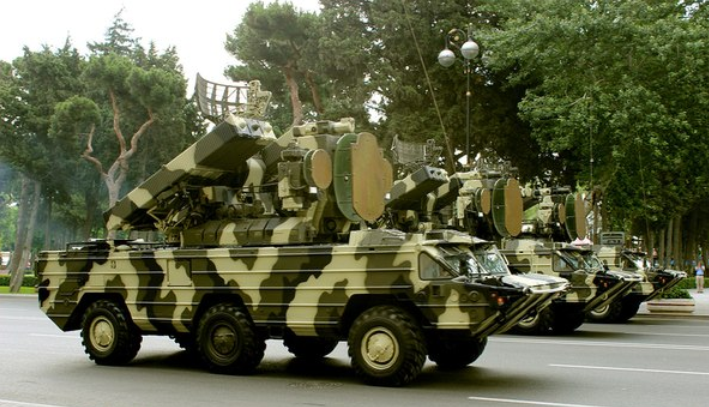
During the modernization of the appearance of the machine has not changed. But thanks to the use of new radar and computing equipment built on a modern element base, the reliability of the complex has increased, the probability of hitting the target has increased, and the noise immunity has improved. The introduction of an optical-electronic airborne target tracking system increases the survivability of the use of anti-radar missiles and electronic suppression by the enemy. In connection with the transition to solid-state electronics, the reaction time and power consumption were reduced. The maximum target detection range is 40 km.
The complex uses modified anti-aircraft missiles. The maximum slant range of target destruction is 12,5 km. The height of the lesion - 0,025 - 7 km. Coagulation / Deployment Time - 5 min. It is reported that, thanks to the upgrade, the life span of the Osa-1T has been extended by another 15 years.
There is information that simultaneously with the upgrades of the Osa air defense missile system Azerbaijan in 2011 acquired the anti-aircraft missile systems of a similar class - T38 Stilet. This complex is a further development option for the Osa air defense missile system, but due to the use of fundamentally new anti-aircraft missiles, a modern radar and electronic computing base, its effectiveness has been significantly increased.
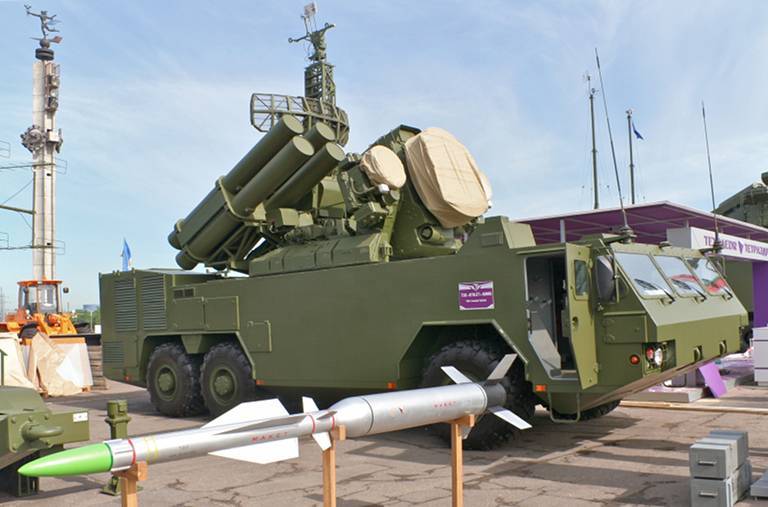
ZRK T-38 "Stilet" is located on the Belarusian wheeled chassis MZKT-69222T cross-country. ZRK T38 "Stilet" is a joint Ukrainian-Belarusian development. The hardware part of the complex was created by specialists of the Belarusian enterprise “Tetrahedr”, and the T382 anti-aircraft missiles were developed for it in the “Luch” design bureau in Kiev. The Stiletto complex is armed with 8 T382 missiles. Compared to the Osa-AKM air defense system, the range of destruction of aerial targets doubled and is 20 km. Due to the use of a two-channel guidance system, it is possible to fire a single target simultaneously with two missiles, which significantly increases the probability of hitting. According to data published in foreign reference books, as of 2014, two batteries of the Stillet T-38 mobile air defense systems were delivered to Azerbaijan at XNUMX.
In 2014, the last 76 of 4 ordered by Tor-8М in 2011 was delivered to Azerbaijan by the Russian military transport aircraft IL-2 at the pumping base.
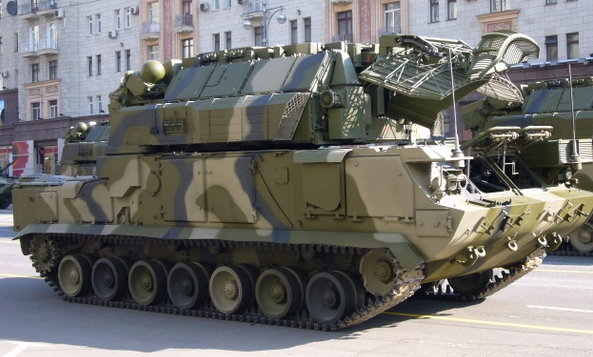
In the modern export version of the short-range complex, 9М338 SAMs are used. The Tor-2МE air defense system is capable of fighting actively maneuvering targets at a distance of 1-12 km and an altitude up to 10 km and accompanying 4 targets simultaneously.
At the parade in June 2013, in honor of the 95 anniversary of the armed forces of the Republic of Azerbaijan, mobile air defense missile systems of the Buk family were demonstrated for the first time. In various sources there are discrepancies regarding the origin of the data of the AMS. It is known that some time ago Azerbaijan bought in Belarus two divisions of the Buk-MB air defense missile system, which is a deep modernization of the Soviet Buk-M1 air defense system. Each vehicle has six self-propelled 9А310MB self-propelled guns, three 9А310МБ ROMs, 80К6М radars on the Volat MZKT wheeled chassis and 9СXNNUMXМБ combat point, as well as technical support vehicles.
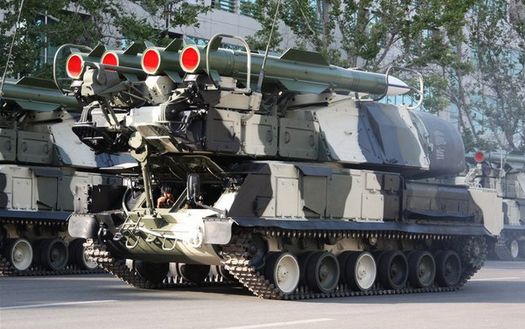
Modernized complexes put for export, taken from the armed forces of Belarus. It is reported that a number of electronic units "Buk-MB" and export air defense systems 9М317Е for armament of the Belarusian air defense missile system were supplied from Russia. Apparently, the cost of used Belarusian complexes is significantly lower than the new Russian ones, which was the reason for their acquisition.
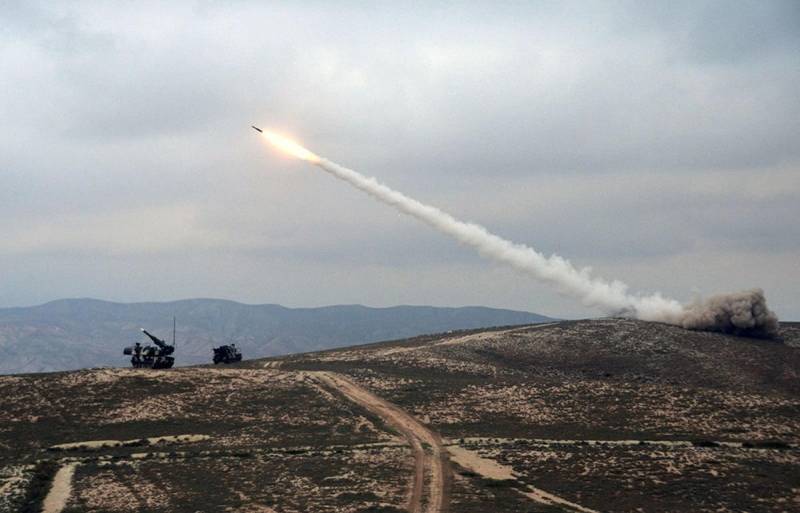
There is also information that in service in Azerbaijan there is at least one division of the Buk M1-2 air defense system, delivered from Russia. Buk-MB anti-aircraft systems with 9М317Е missiles equipped with multi-mode semi-active Doppler radar seeker are capable of hitting targets with a maximum flight speed of more than 1200 m / s, at a distance of up to 3-50 km and an altitude of 0,01 - 25 m.
In addition, some media claimed that Azerbaijan ordered the SPYDER SR near-zone air defense system in Israel with a range of 15-20 km and the Iron Dome anti-missile system, designed to protect against unguided missiles with a range from 4 to 70 kilometers. However, at the moment there are no facts confirming the practical implementation of this contract.
At the time of the collapse of the USSR, mobile and stationary radars consisted of the radio engineering units deployed in Azerbaijan: П-12, П-14, П-15, П-18, П-19, П-35, П-37, П-40 , P-80, 5Н84А, 19Ж6, 22Ж6, 44Ж6 and radio altimeters: PRV-9, PRV-11, PRV-13, PRV-16, PRV-17. Most of this technology was 15-20 years old. Radar and altimeter, built on a lamp element base, required considerable effort to maintain them in working condition, and therefore a few years after the transfer to Azerbaijan, the number of operational radars was greatly reduced. Currently, 11 constantly deployed radar posts are operating in the republic. From Soviet times preserved radar: R-18, n-19, n-37, n-40, 5N84A, 19ZH6, 22ZH6 altimeters and PRV-13, and PRV PRV-16-17. The P-18, P-19, 5Н84А and 19Ж6 radars with the help of foreign specialists were repaired and upgraded. There is information that the Soviet meter P-18 and decimeter P-19 were upgraded in Ukraine at the State-owned enterprise "Iskra" Research and Production Complex in Zaporozhye to the level of P-18M and P-19MA. As a result of the modernization, it was possible to extend the life of the stations, reduce power consumption and increase the time between failures.Also improved detection characteristics, implemented the ability to automatically track the trajectories of air objects.
To replace outdated and worn-out Soviet-made radars at the beginning of the 2000-s, three-coordinate radars of the 36-6-M airspace survey were supplied from Ukraine. The detection range of 36D6-M is up to 360 km. For radar transportation, KrAZ-6322 or KrAZ-6446 tractors are used, the station can be deployed or collapsed within half an hour. The construction of 36D6-M radar was carried out in Ukraine by Iskra. Until now, the 36D6-M station meets modern requirements and is one of the best in its class by the criterion of “cost-effectiveness”. It can be used both independently as an autonomous air traffic control center, and in conjunction with modern automated air defense systems for detecting low-flying air targets covered by active and passive interference. Currently, there are three 36D6-M radars in Azerbaijan.
In 2007, Ukraine began mass production of a three-dimensional circular all-round radar with a phased array 80K6. The circular review station with a phased antenna array is a further development option of the Pelican 79K6 radar, which was built in the USSR.
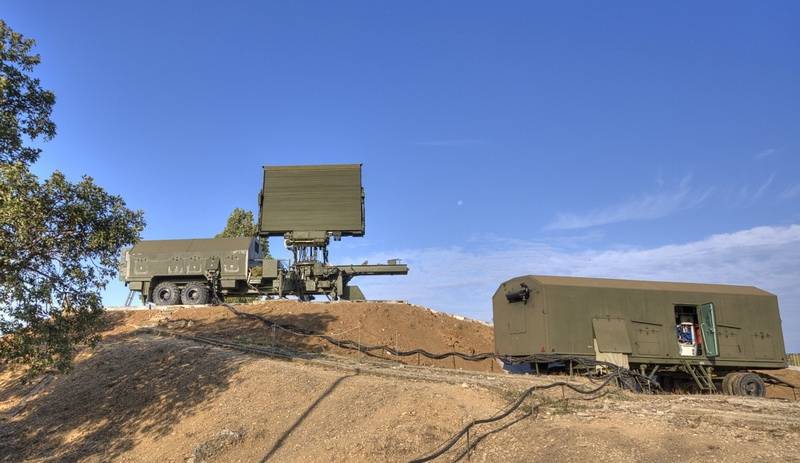
Radar 80K6 is designed for use in the composition of the Air Force and Air Defense Forces to monitor and issue targets to anti-aircraft missile systems and automated air traffic control systems. The deployment time of the radar is 30 minutes. Detection range of high-altitude aerial targets - 400 km.
In 2012, the purchase of the Belarusian Buk-MB air defense system was linked to the acquisition of the upgraded Ukrainian 80K6М radar radars. The mobile three-coordinate radar station of the circular review of the 80K6M radar was demonstrated for the first time on June 26 on the military parade in Baku.
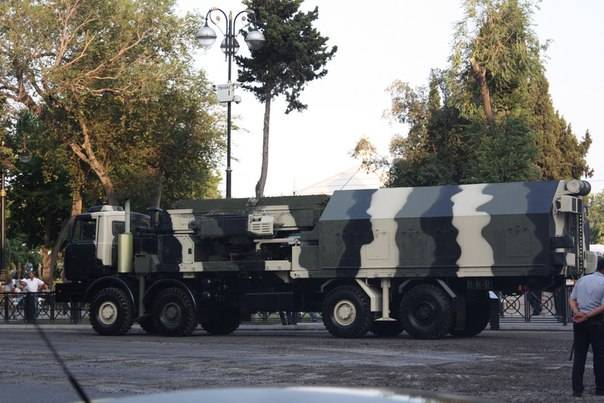
Compared with the basic modification of its characteristics are significantly improved. Deployment-coagulation radar 80K6M shortened 5 times and is - 6 minutes. 80K6M radar has an increased vertical viewing angle - up to 55 °, which allows detecting ballistic targets. Antenna post, hardware and calculation are placed on one on the chassis of all-terrain. According to representatives of Iskra, the main tactical and technical capabilities of the 80K6M radar can compete with the American three-coordinate radar AN / TPS 78 and the French GM400 Thales Raytheon Systems station.
In addition to Ukrainian radars, Azerbaijan procured mobile three-dimensional Israeli radar ELM-2288 AD-STAR and ELM-2106NG. According to Israeli data, radars have a dual purpose, in addition to controlling the actions of air defense missile systems and fighter pointing, they can be used for air traffic control.
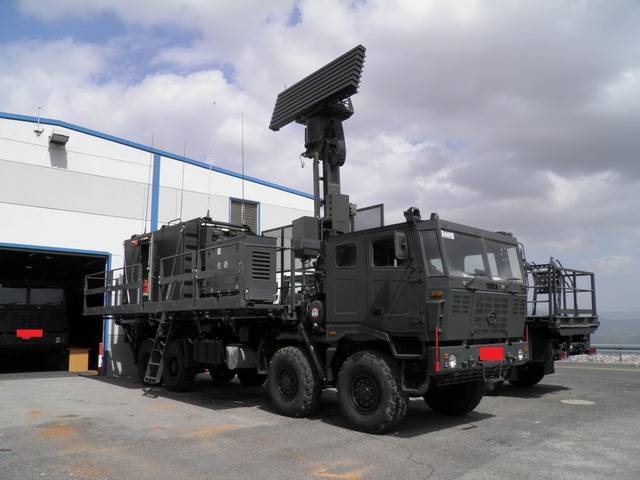
The ELM-2288 AD-STAR radar is capable of detecting high-altitude aerial targets at a distance of up to 480 km. The ELM-2106NG radar is designed to detect low-flying aircraft, helicopters and UAVs at a distance of 90 km, while the number of simultaneously accompanied targets is 60. Apparently, the ELM-2288 AD-STAR and ELM-2106NG radar radars were purchased under the same contract with the Barak 8 air defense system.
There is also information that the EL / M-2080 Green Pine early missile warning radar operates in Azerbaijan. According to the Stockholm Peace Institute (SIPRI), the contract for the supply of anti-missile radar was concluded in 2011 year. The main purpose of the radar EL / M-2080 Green Pine is the detection of attacking operational tactical missiles and the issuance of target designation of Barak 8 SAMs and С-300PMU 2 SAMs.
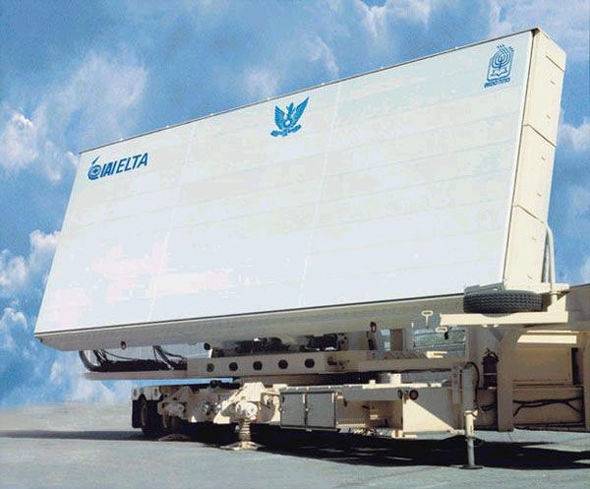
An Israeli-made radar has an antenna with an active phased array that includes more than 2000 transmitting modules and operates in the 1000 - 2000 MHz frequency band. Antenna dimensions - 3x9 meters. The radar mass is about 60 t. The detection range of ballistic targets is more than 500 km.
Information about the air situation received from radar stations via fiber-optic and radio-relay lines flows to the central air defense command post of Azerbaijan, located at the Nasosnaya air base. About 15 years ago, a radical improvement of the combat control system of air defense and fighter forces began aviation. In this, Ukraine, as well as the USA and Israel, provided significant assistance to Azerbaijan. In addition to the supply of automated control equipment and high-speed data exchange, training for local staff was organized.
Azerbaijan conducts active military cooperation with Turkey and the United States and provides information from its radar stations. Americans are particularly interested in data obtained on the border with Iran and Russia, as well as the situation in the Caspian Sea.
In 2008, two stationary radar stations that were modernized with the help of the United States began work on the dominant terrain in 1 km from the Iranian border in the Lerik region of Azerbaijan. In Soviet times, two stationary radars of the meter range of the П-14 family operated here. What technology is now installed under radio-transparent protective domes is unknown, it is possible that this is the American ARSR-4 radar stationary version of the three-dimensional radar AN / FPS-130 manufactured by Northrop Grumman Corporation. The detection range of large high-altitude targets using the ARSR-4 radar reaches 450 km. Means of radio reconnaissance of Russian aircraft flying in transit through Iranian airspace to Syria, in the past, regularly recorded the work of powerful radars on the Russian-Azerbaijani border and over the Caspian Sea.
At present, there is a continuous radar field over the territory of Azerbaijan, repeatedly covered by radars of various types. In addition, Azerbaijani radars are able to look far beyond the borders of the republic. In general, Azerbaijan has a fairly balanced and perfect air defense system, capable of inflicting serious losses on a potential aggressor, covering important military and administrative-political facilities and its military units from air strikes.
Based on:
https://lenta.ru/articles/2016/04/04/wartime/
https://razm.info/ru/12201
https://ru.oxu.az/war/65641
http://dambiev.livejournal.com/660256.html
https://vpk-news.ru/articles/29699
http://military-informant.com/airforca/1-sp-1987267183.html
https://www.flightglobal.com/news/articles/analysis-world-air-forces-maintaining-strength-443655/
https://www.mintfo.com/security-defense/phl-receives-first-ordered-israeli-radar/1454/
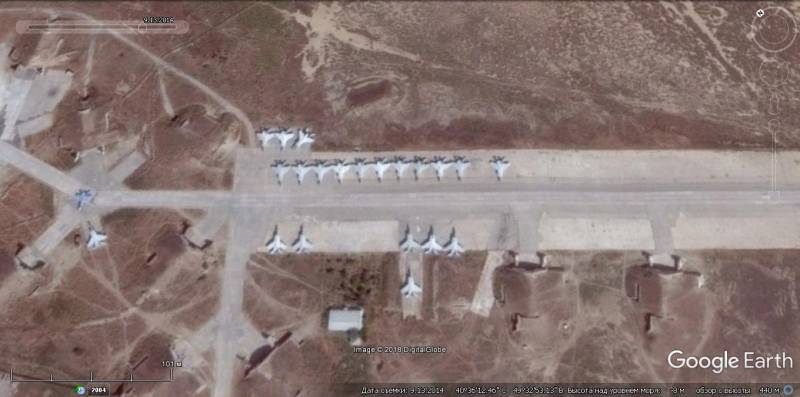
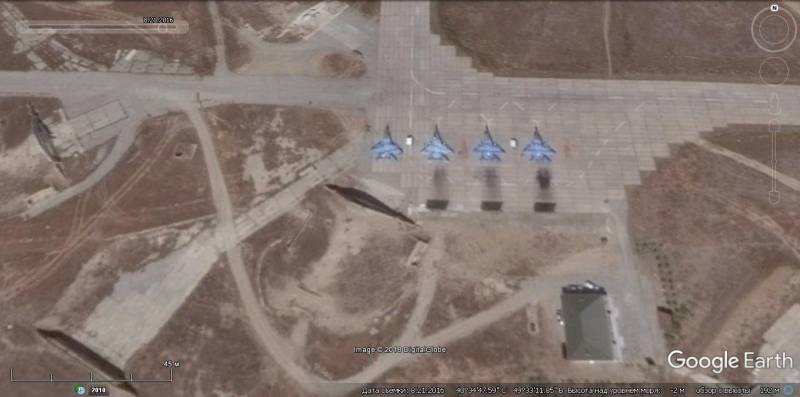
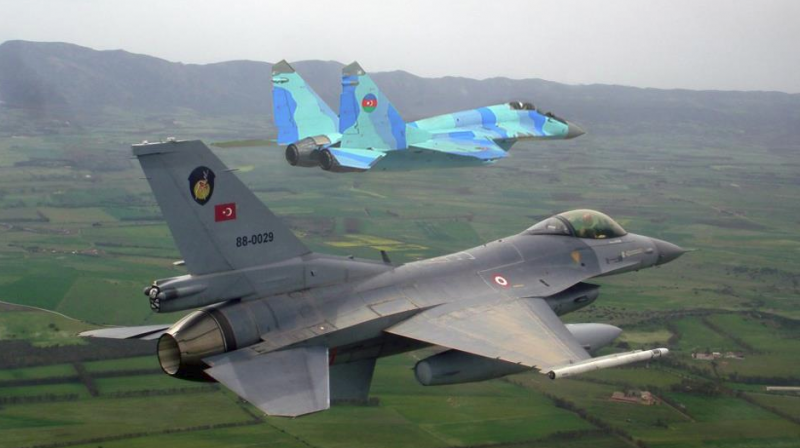
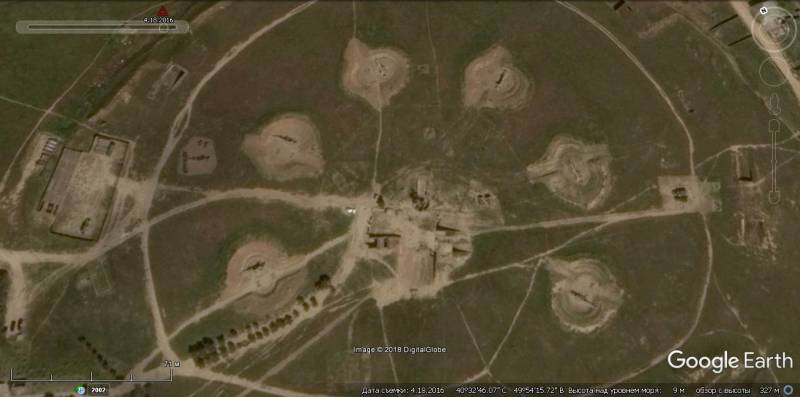
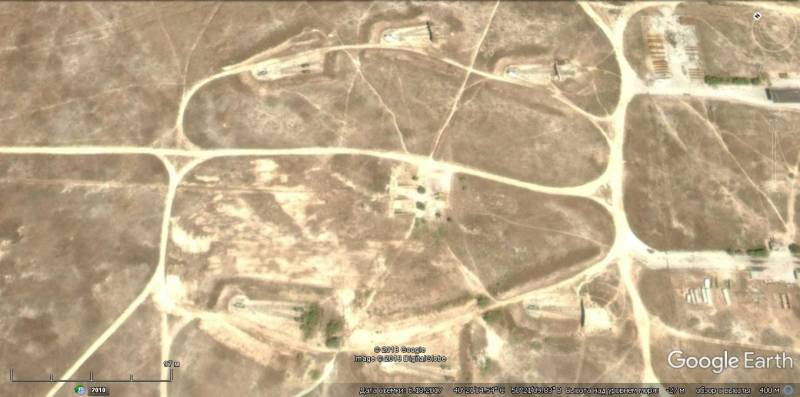
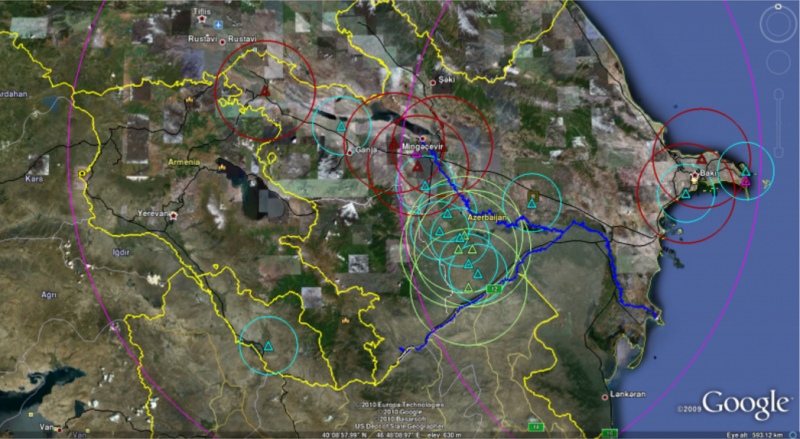
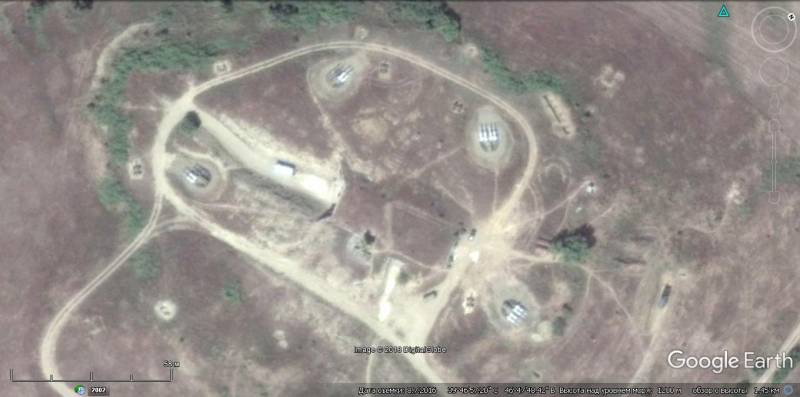
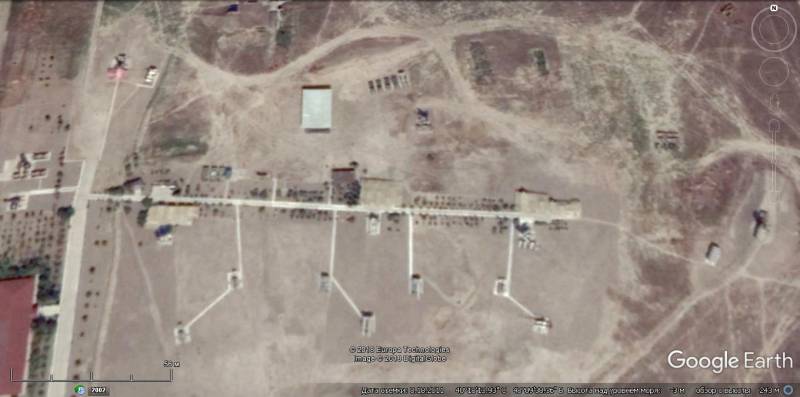
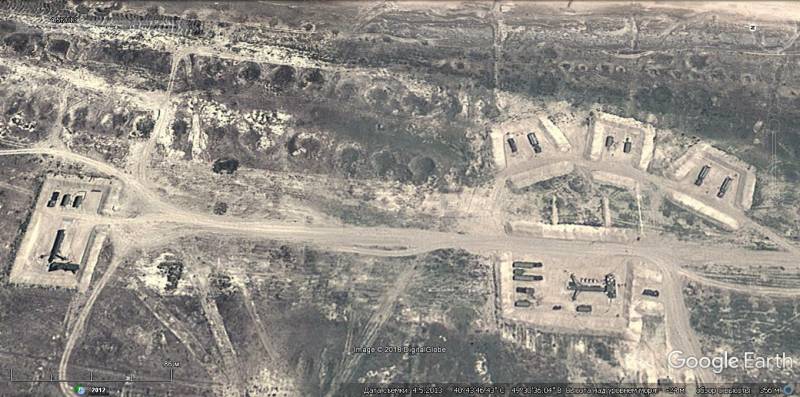
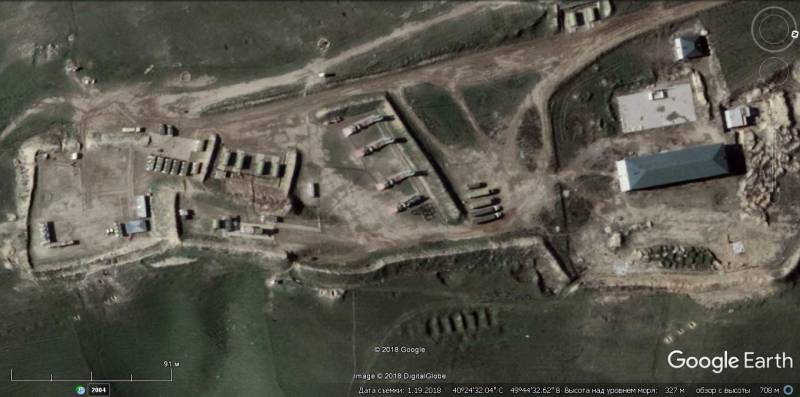
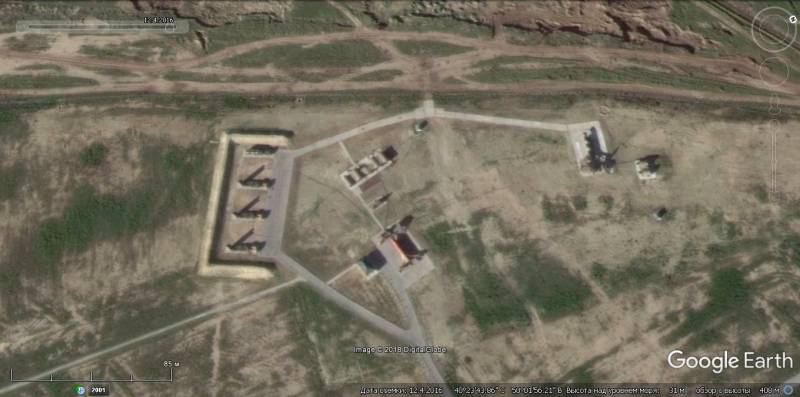
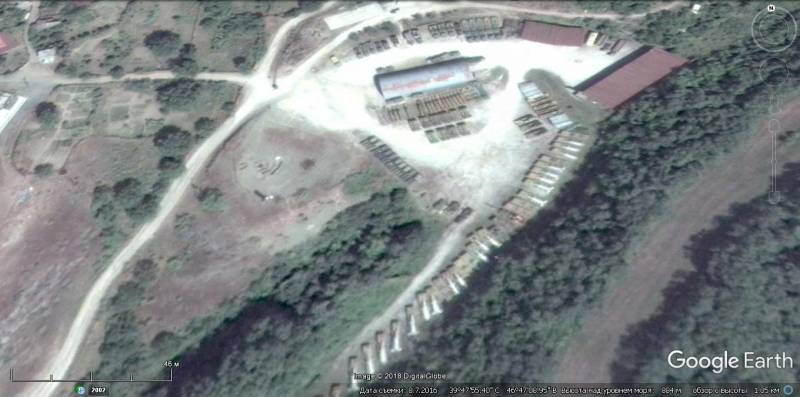
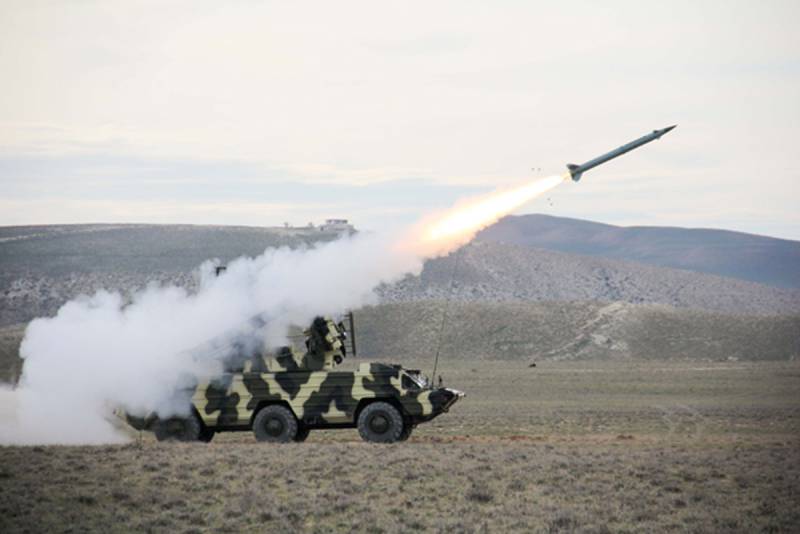
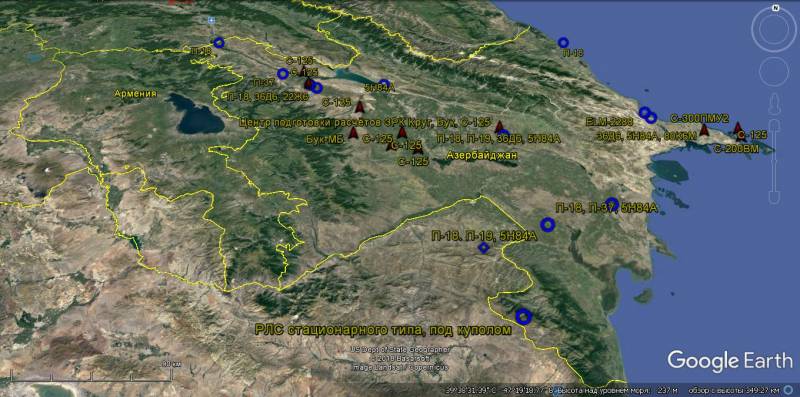
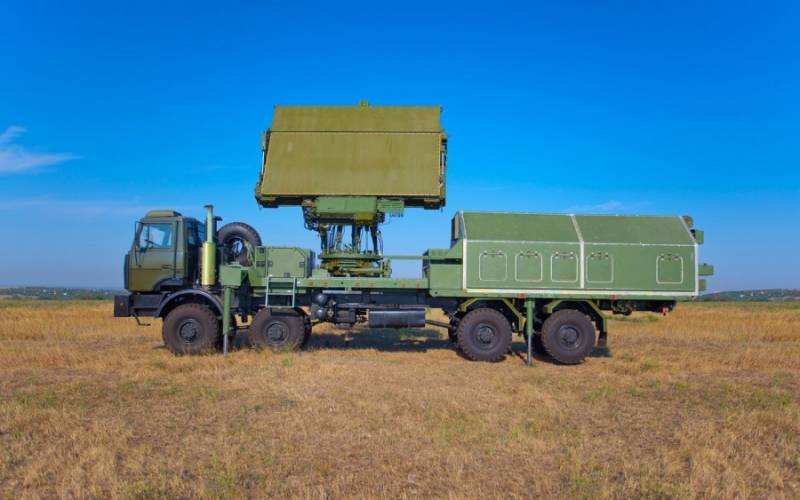
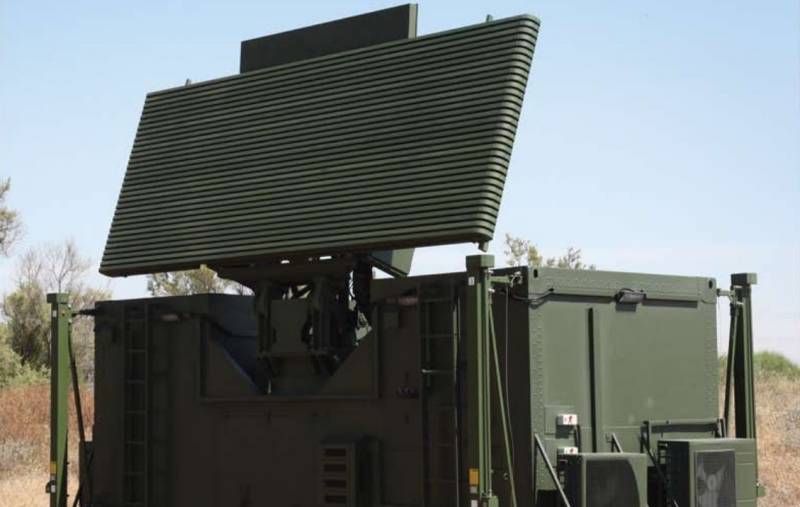
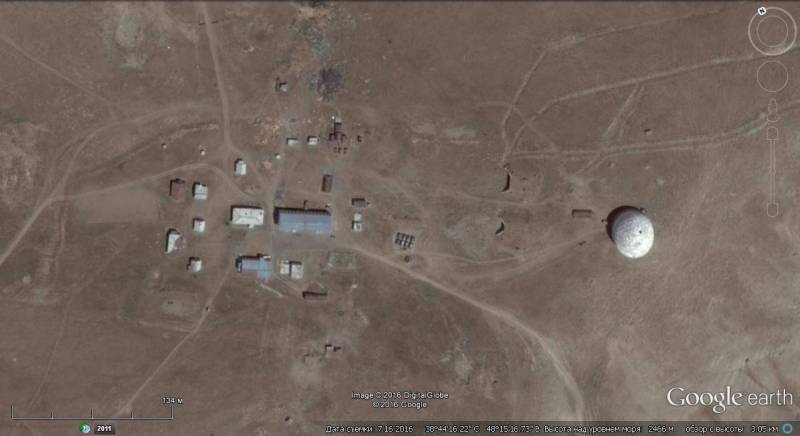
Information